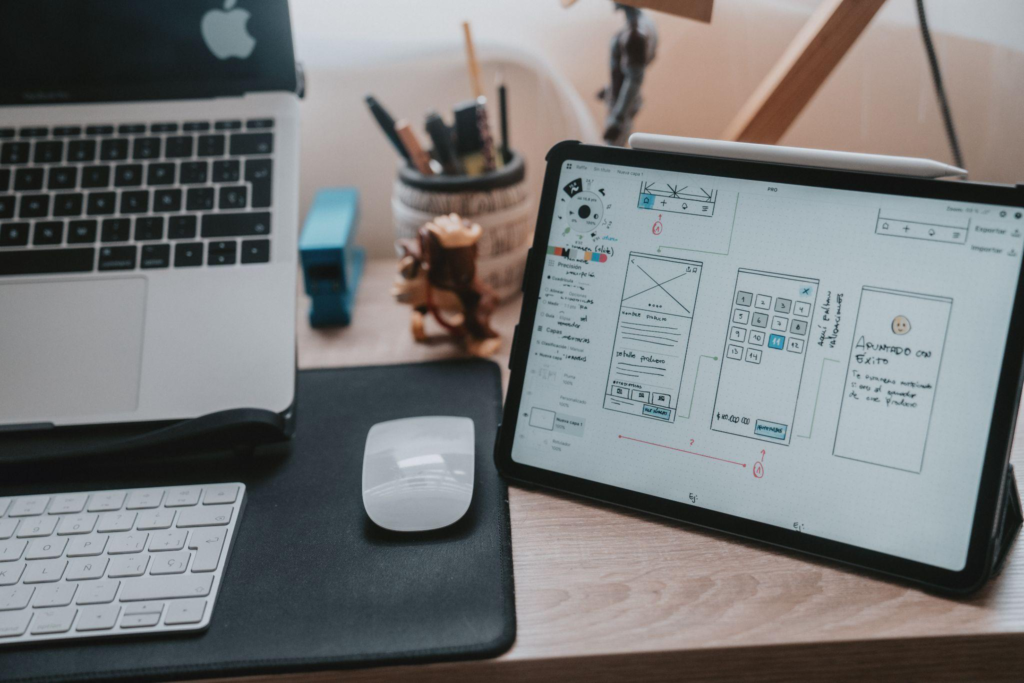In recent years, there’s been a boom in the eCommerce industry. With the rise of online shopping, businesses have had to adapt their websites and design strategies to meet customer demands. One of the most important aspects of an eCommerce website is the user interface (UI). The UI is what allows customers to interact with the website and make purchases. If it’s not designed well, customers will likely leave the site without making a purchase. In this blog post, we’ll explore some best practices for eCommerce UI design. By following these tips, you can create a UI that is both effective and appealing to customers.
The Three Pillars of Effective eCommerce UI Design
When it comes to eCommerce UI design, there are three key pillars to keep in mind:
1. Navigation and search should be easy and intuitive.
Your eCommerce site should be easy to navigate, with a clear and logical structure that users can understand quickly. The search function should also be prominent and easy to use so that users can find what they’re looking for without difficulty.
2. Product pages should be informative and visually appealing.
Your product pages need to provide enough information for users to make an informed decision, but they also need to look good in order to encourage users to buy. Make sure your images are high quality and your descriptions are clear and concise.
3. The checkout process should be smooth and simple.
The last thing you want is for users to abandon their carts because the checkout process is too complicated or time-consuming. Keep your forms short and sweet, and don’t ask for unnecessary information. Offer multiple payment options so that users can choose the one that’s right for them, and make sure the whole process is secure so that users feel confident entering their personal details.
Creating a Seamless User Journey

The user journey is the path that a customer takes from becoming aware of your product or service to make a purchase. Creating a seamless user journey is essential for providing an excellent customer experience and ensuring high conversion rates.
There are a few key things to keep in mind when designing the user journey:
1. Make it easy for customers to find what they’re looking for.
Your website’s navigation should be clear and intuitive so that customers can easily find the products or services they’re interested in. Use prominent search bars and category filters to help customers narrow down their options.
2. Guide customers through the purchase process.
The purchase process should be smooth and straightforward, with clear instructions at each step. Include Add to Cart buttons on every product page, and provide a visible checkout button on the shopping cart page. Display order total information prominently throughout the checkout process.
3. Follow up after the purchase is complete.
Once a purchase is made, send along a confirmation email (and optionally a text message) outlining the details of the transaction. This helps to ensure that customers have all the information they need about their purchase, and provides peace of mind in case there are any problems with delivery or billing.
4. Make it easy for customers to get in touch if they need help.
Include a prominently displayed customer service number or live chat widget on every page of your website. This way, if customers have any questions or problems, they can easily get in touch with a customer service representative.
Designing for Different Devices
Different devices come with different screen sizes, resolutions, and pixel densities. It’s important to take all of these factors into account when designing your eCommerce UI. Here are a few best practices to keep in mind:
- Use vector graphics whenever possible. This will ensure that your UI looks sharp on all
devices, regardless of resolution or pixel density. - Avoid using fixed widths and heights. Instead, use percentage-based or fluid layouts that can adapt to different screen sizes.
- Use high-contrast colors and large font sizes for better readability on small screens.
- Make sure your buttons and links are big enough to be tapped easily on mobile devices.
following these best practices will help you create an eCommerce UI that looks great and works well on any device.
Optimizing the Checkout Process
The checkout process is one of the most important aspects of eCommerce UI design. A good checkout experience can make the difference between a sale and a lost customer. Here are some tips for optimizing the checkout process:
1. Make the process as simple and straightforward as possible. The fewer steps there are, the better.
2. Include clear and concise instructions at each step of the process.
3. Allow customers to save their progress so they can pick up where they left off if they need to take a break.
4. Offer customer support throughout the process in case anything goes wrong.
5. Make sure the entire process is secure so customers can feel confident about entering their personal and payment information.
By following these tips, you can optimize the checkout process and make it more user-friendly, which will ultimately lead to more sales.
The do’s and don’ts of eCommerce UI design

When it comes to eCommerce UI design, there are a few key things to keep in mind. First and foremost, your UI must be user-friendly and easy to navigate. Secondly, it should be visually appealing and consistent with your brand identity. And lastly, it should be responsive and mobile-friendly.
Here are a few specific things to keep in mind when designing your eCommerce UI:
DO:
- Make sure your UI is user-friendly and easy to navigate. Use clear and concise labels and menus, and organize information in a logical way.
- Use high-quality visuals that are consistent with your brand identity.
- Make sure your UI is responsive and mobile-friendly. More and more people are shopping online using their mobile devices, so it’s important to make sure your site looks great and works well on all screen sizes.
DON’T:
- Don’t use complex or confusing layouts. Keep things simple so users can easily find what they’re looking for.
- Avoid visual clutter. Too much information or too many visuals can be overwhelming for users. Stick to a clean, minimalist design.
- Don’t forget about usability testing! Always test your UI with real users before launch to get feedback and make sure everything is working as intended.
Conclusion
As you can see, there are a number of best practices that you can follow when it comes to eCommerce UI design. By keeping these in mind, you can create an online store that is not only user-friendly but also visually appealing. Remember, first impressions count — so make sure your eCommerce UI is up to par!

